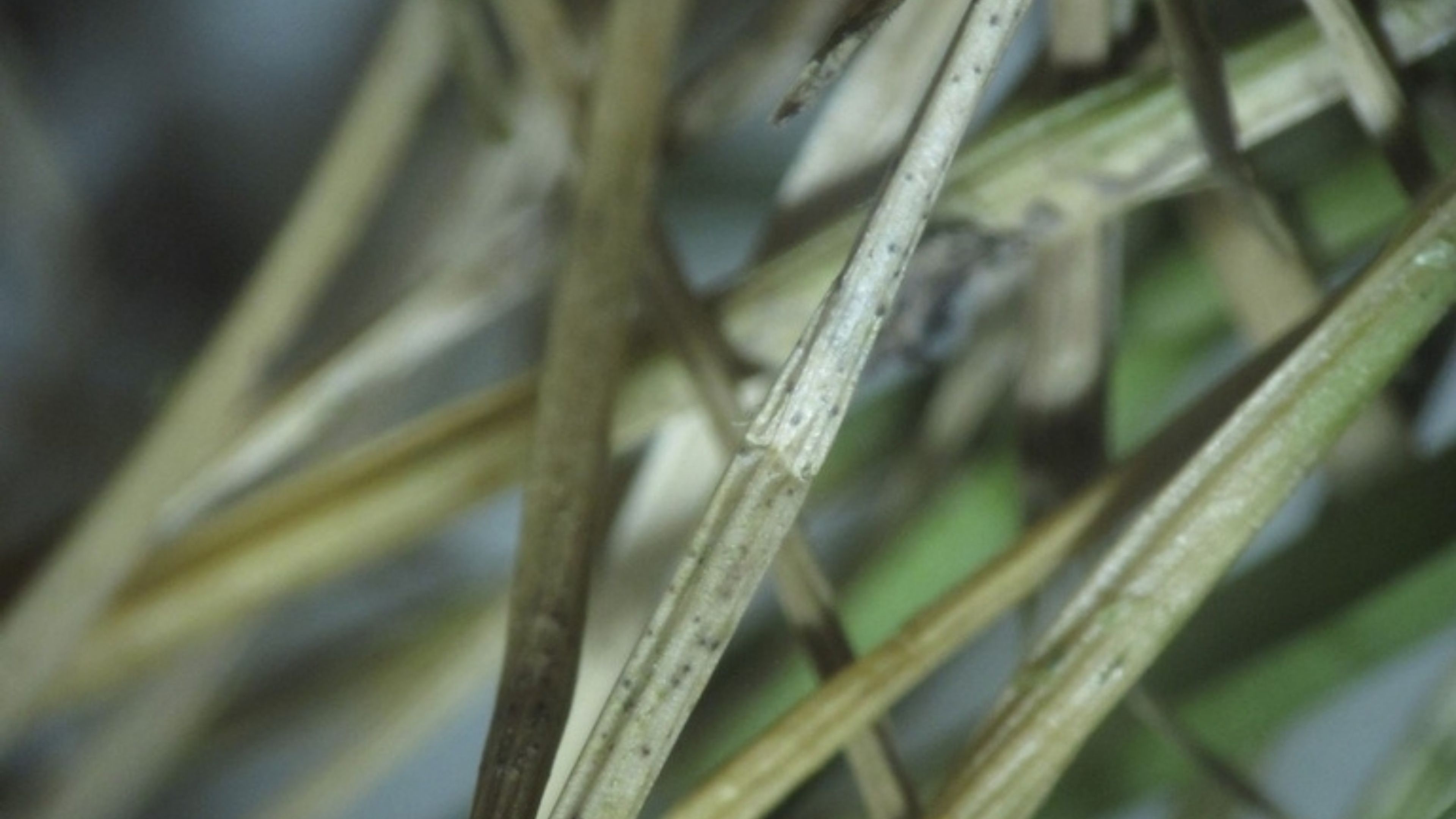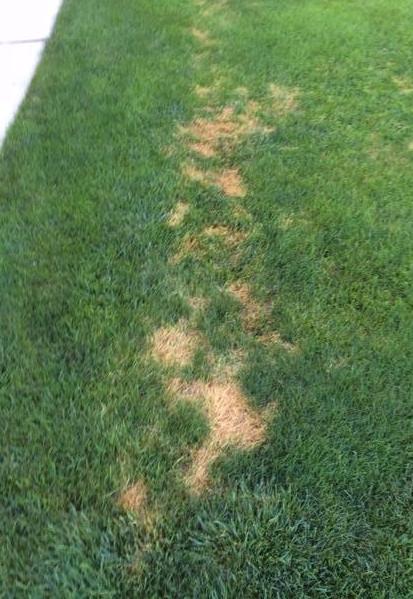


Never cut more than one third of the grass blade when mowing. Anything shorter than this causes stress on the lawn and allows weed infiltration. Please be sure 2.5” – 3” of height remains after you’ve cut the lawn. Mowing frequency, height of cutting, and blade sharpness are very important. We apply the best products available in the correct amount at the right time. If you haven’t already, please consider our Weed and Feed fertilizing program. The four main cultural practices you can do properly for a stress-free lawn are: fertilizing, mowing, watering, and core-aerating. There also are some practices you can perform regularly to relieve stress on your lawn and lessen your chances of a yellow, patchy lawn appearing overnight. The good news is that recovery should only take 3-4 weeks, depending on how the growing conditions are over that time. Once they appear, there is little you can do to make them go away. Given that the outbreaks are so random, you typically won’t notice your lawn is affected until after the patches are already there. The “dead” patches are commonly seen where your mower tires track because your tires will easily spread the spores as you mow your lawn. This also means that the disease is transferred by infectious spores that sit on the surface of the grass. This is a foliar disease that kills the leaf tissue, not the root system. You will start seeing these damaged lawns near the beginning of June, but they can also occur anytime throughout the summer. Weather can have a factor in it as well, as it is typically preceded by wet weather that turns hot and dry. This can pop up overnight, having a great looking lawn one day and a streaky yellow lawn the next. This disease causes irregular patches of straw-brown color and will make your grass appear dead.

It is also seed-borne.Do you see bleached tracks on your lawn that typically follow the path of your mower? It could be Ascochyta Leaf Blight, which is a grass fungus that is found primarily on Kentucky Bluegrass, the most common grass in Iowa. The disease is favoured by long periods of rain and cool weather. Lint may show a grey discolouration with conidiomata in half-opened bolls. Flowers are not attacked, but mature lint can be destroyed. Cankers may encircle the stem and kill the distal parts. The centre of these lesions becomes pale, liver-coloured and covered with tiny black dots (bodies of fungal spores, conidiomata). Stem infection, which occurs only during consecutive days of cloudy, wet weather, leads to the formation of lesions, which may reach several centimetres in length, with cracks and ragged edges. The almost bare stems, with a few small leaves at the tip, are characteristic of the disease at the later growth stages. The upper small leaves, petioles and buds are often infected, and the plant dies. Later they change to a light brown, the purple ring around the outside disappears, and the diseased tissue often falls out. The spots become somewhat elongated and raised on the upper surface. The first symptoms are small, round, white, purple-ringed spots on the cotyledons and lower leaves. It may manifest as seedling blight, a leaf spot, a stem canker, and as a boll spot. The disease is caused by fungus Ascochyta gossypii.


 0 kommentar(er)
0 kommentar(er)
